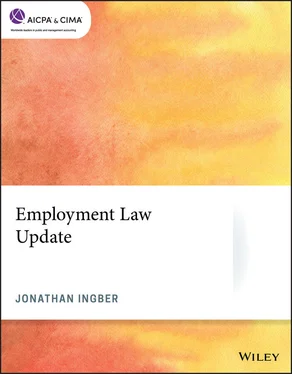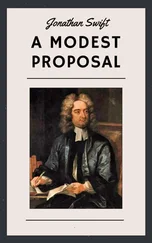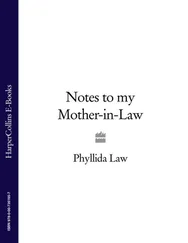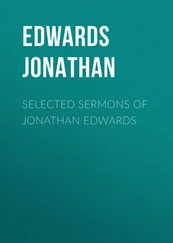Analyze the process by which most employment claims get to federal or state court.
Recognize that the applicability of state or federal law is a function of the concept of federalism.
In September 2017, William J. Emanuel 1 was confirmed as the newest member of the National Labor Relations Board (NLRB), marking the transition from Democratic to Republican majority control of the NLRB. President Trump has nominated Janet Dhillon to be chair of the Equal Employment Opportunity Commission (EEOC). In November 2017, Peter Robb was confirmed by the Senate as the NLRB's incoming general counsel following his nomination by President Trump.
Commentators have suggested that the majority-Republican-controlled NLRB may revisit the NLRB's effort to classify franchisors as co-employers with their franchisees (the McDonald's case). Several of former President Obama's executive orders have been rescinded, including:
Executive Order 13673 [Fair Pay and Safe Workplaces] on March 27, 2017
Executive Orders 13683 and 13738, both of which had amended Executive Order 13673
The Trump administration and the Republican-controlled Congress 2 has sought to limit or reduce theEEOC's enforcement budget — consistent with the administration's “pro-business” approach — and the EEOC may seek to eliminate or revise pending EEOC rules. One such rule made major revisions to the Employer Information Report (Form EEO-1) by requiring employers to report wage information broken down by gender and race. That rule was scheduled to become effective in March 2018, and was approved by a “party-line” vote of the then-Democratic EEOC majority.
It also is possible that the new administration could at some point propose legislation to establish federal paid sick leave rights, as President Trump approvingly spoke of during the campaign. President Obama's Executive Order 13706 required up to seven days of paid sick leave for workers on federal contracts. The U.S. Department of Labor implemented the order through final regulations effective January 1, 2017, covering procurement contracts for construction under the Davis-Bacon Act, service contracts covered by the Service Contract Act, and contracts in connection with federal property or lands and related to offering services for federal employees, their dependents, or the general public.
Speaking in generalities, the newly constituted EEOC is expected to be more accommodating to employers in 2019 and the NLRB is predicted to exhibit a more business-friendly approach in 2019. No matter your politics, it is clear that labor policy and priorities in the new administration have and will differ materially from recent historical policies and priorities.
Background on employment law
Employment laws in the United States consist of federal laws that apply throughout the country, as well as state laws that sometimes are consistent or may vary from state to state. Our employment laws developed in response to a variety of factors, including media exposés of unsafe or poor working conditions, 3 societal changes, and perceptions that employers may have taken advantage of workers or failed to compensate them fairly. Many employment laws are intended to “level the playing field” among job applicants, employees with similar skill sets and work performance, and persons of different races, genders, religious beliefs, and other attributes. One constant in employment law is change; that is, as our society's values and beliefs evolve, employment law is often revamped in reaction to those changes. For this reason, employment is a dynamic 4 area of the law that calls for financial officers and managers to understand recent developments and anticipate the impact of identifiable trends.
In addition to applicable employment laws, the courts also have acted to protect employees from unscrupulous employers. Over time, the courts developed “public policy” rights that are important bulwarks against wrongful actions by employers. Sometimes public policy rights are set forth in employment laws, while in other instances the courts or the EEOC have issued decisions that define or expand public policy 5 rights. The following are examples of public policy rights that the courts or the EEOC have enforced, even for employees who are employed “at will” 6 and who can be terminated at any time for any reason or no reason at all:
An employee should work in an environment free of, and not be terminated or forced to resign because of, discrimination based on a protected category.
An employee should work in an environment free of, and not be terminated or forced to resign because of, sexual, racial, religious, or disability-based harassment.
An employee should work in an environment free of retaliation by the employer if the employee reports wrongdoing, violations of law, violations of company policies, or if the employee refuses to perform an act that would violate federal or state law.
An employee should be able to take time away from work to which the employee is legally entitled.
Exercise free speech rights
An employee should be free to express factually based opinions and exercise in any media permitted free speech rights that do not disparage others, are not false, are not intended to cause emotional distress, and do not divulge company confidential information.
Benefit from applicable privacy rights
An employee should have his or her protected health information, disciplinary matters, and personal information protected in accordance with applicable privacy laws.
Benefit from consistent application of employer policies
An employee should have the right to have the employer consistently follow investigative, disciplinary, and termination procedures that are set forth in the employer's policies or in applicable law.
When an applicant's or employee's statutory or public policy rights are violated, an applicant or employee may be able to sue for hiring, reinstatement, promotion, back pay, forward pay, and reasonable accommodation. Compensatory damages may be recoverable for actual monetary losses, future money losses, mental anguish, and inconvenience. Where an intentional act is alleged and an employer acted with malice or reckless indifference, the applicant or employee also may be entitled to an award of punitive damages. 7 The term “punitive” is derived from “punish,” which is the objective when a wrongdoer engages in willful or deliberate behavior that injures another person.
In general, an at-will employee may be fired with cause, without cause, or for no reason at all — as long as public policy rights or other legal rights of the employee are not violated. This holds true even in California, where the California Supreme Court held in 2006 in Dore v. Arnold Worldwide 8 that an employer who provided the employee notice of an at-will relationship at the time the employee was hired — in specific, clear, and unambiguous language — could terminate an at-will employee at any time, with or without cause.
Note: California is singled out here because its courts are generally believed to be more favorably disposed to employee rights than the courts of many other states. For this reason, California state court employment litigation often can signal potential future employment law developments in other states.
When an applicant or employee is a member of a protected class, the applicant or employee will have rights under federal or state laws, or both, which are intended to protect the applicant or employee from unlawful discrimination or harassment based on membership in the class. 9 Federal and some state laws broadly define protected classes as encompassing the following:
Читать дальше












